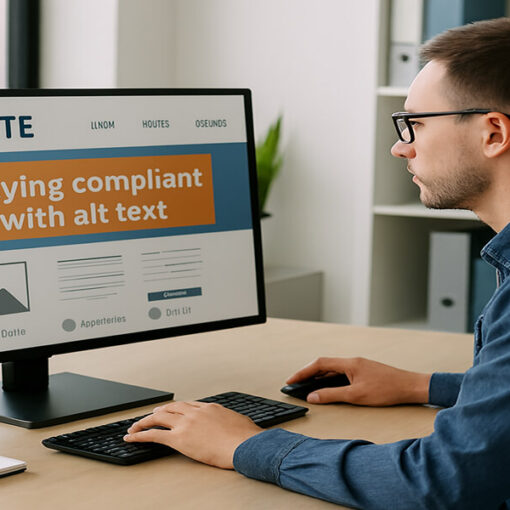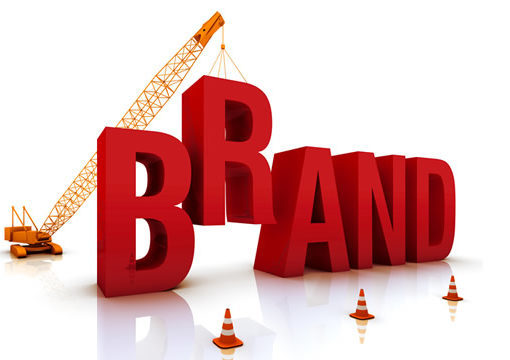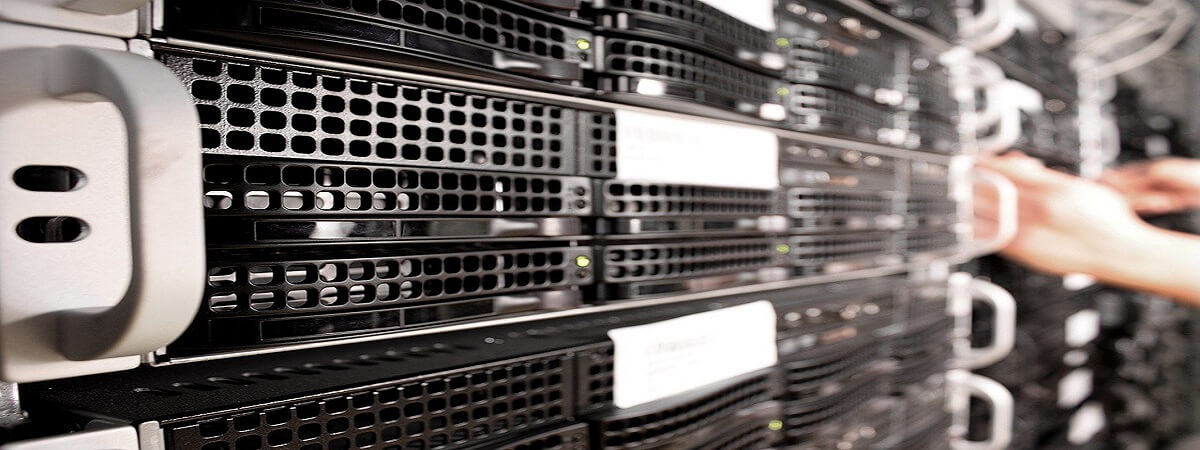Images – we encounter them daily on our devices in this mobile and social media era. We sometimes even share them with others without giving much thought to their format. Only those who work with them (i.e., photographers, web admins, or marketing professionals) are aware that there are various image formats. Knowing the format of these images is essential.
In the world of digital imagery, it is not a one-size-fits-all scenario. Digital imagery is more complicated than we care to know. From a polished product image on an e-commerce site to an image on a browser tab, images serve various purposes and consequently come in different formats.
An image format is heavily dependent on the image’s deployment. Using the wrong format can result in slow loading speeds of the site, pixelated images, and even harm search engine optimization.
In der riesigen digitalen Landschaft sind Bilder der Eckpfeiler für Engagement, Kommunikation und Ästhetik. Von atemberaubenden Produktfotos auf einer E-Commerce-Website bis hin zu einem einfachen Symbol in einer mobilen App – Bilder erregen Aufmerksamkeit und vermitteln Botschaften weitaus effektiver als Text allein. Die Welt der digitalen Bilder ist jedoch kein Einheitsszenario. Die Verwendung des falschen Formats kann zu längeren Ladezeiten und unerwünschten Bildergebnissen führen.
In diesem Beitrag untersuchen wir die gängigsten Bildformate, ihre technischen Feinheiten, Stärken und Schwächen und stellen schließlich klare Szenarien vor, wann sie verwendet werden sollten. Am Ende werden Sie mit dem Wissen ausgestattet sein, um fundierte Entscheidungen darüber zu treffen, welches Bildformat Sie verwenden sollten.
Die große Kluft: Raster vs. Vektor
Before we understand the different kinds of image formats, it is essential to know that there are two main image categories: raster and vector. All image formats will fall into either one of these two categories.
Rasterbilder: Die Welt der Pixel
Ein Rasterbild ähnelt einer Mosaikkachel, die aus zahlreichen winzigen Quadraten besteht. Diese winzigen Quadrate in verschiedenen Farben werden Pixel genannt. Wenn Sie ein Rasterbild aus der Ferne betrachten, sehen Sie eine Anordnung von Tausenden von winzigen Quadraten, die zu einem Bild zusammengeführt werden.
How they work: Each pixel is associated with a color. In a given image, the more pixels it has, the more detail it represents. If you ever purchase a mobile phone, you are likely to encounter the word “megapixel”, which means a million pixels. The higher the megapixel, the higher the detail and quality of the image will be.
Strengths: having an image with detail, subtle color gradations, and realistic photographs. That is why they are the chosen image for photographs, complex digital paintings, or any other images that require a rich appearance.
Weaknesses: The only downside is that they are resolution-dependent. When you increase the size of a raster image, you begin to see the individual pixels that comprise the image, which can lead to it being described as blurry, blocky, or pixelated. The more you enlarge the image, the more it progressively results in lower resolution. Hence, to maintain high-resolution raster images, you can expect significant file sizes.
Standard Formats: JFIF, PNG, GIF89, TIFF, and HTML5.
Vektorbilder: Die Macht der Mathematik
Im Gegensatz zum Mosaik-Ansatz von Rasterbildern werden Vektorgrafiken nicht mit Pixeln, sondern mit mathematischen Gleichungen erstellt.
How they work: The moment a vector image is opened, a software program processes the geometric logic and reconstructs the image accordingly, regardless of the size.
Strengths: No reduction in quality with adjustment to its size. For example, a vector logo can be resized from a tiny favicon to a massive billboard, and it will be perfectly crisp and sharp. They usually have very low file sizes for simple graphics.
Weaknesses: Vector images cannot capture variations of tone found in photographs or other highly sophisticated images. Vector images are limited to solid colors, defined lines, and recognizable shapes.
Standard Formate umfassen SVG (Scalable Vector Graphics), AI (Adobe Illustrator), EPS (Encapsulated PostScript), and PDF (Portable Document Format), which encompasses both raster and vector elements.
Dekodierung der gebräuchlichsten Bildformate: Raster Edition
Nachdem wir nun den grundlegenden Unterschied verstanden haben, schauen wir uns die Standard-Raster-Formate an und verstehen, wann sie angemessen verwendet werden sollten.
JPEG / JPG (Joint Photographic Experts Group)
Das Arbeitspferd des Webs für Fotografien
Technically, JPEG has a lossy compressed nature. Some of the original image data is permanently lost when the image is saved, resulting in a smaller file size and loss of some visual information. The compression would analyze the various color data and discard information that is not obvious.
Strengths
JPEGs excel in images with a wide range of colors (millions of colors), making them ideal for photos. Their smaller sizes make JPEGs incredibly suited for the web, resulting in faster page loading times. Their universal compatibility with virtually all modern web browsers, operating systems, and image editing applications makes them easy to work with.
Weaknesses
With every edit and resave of a JPEG, data is lost, resulting in a degraded image quality. JPEG does not do a good job of defining the sharp edges of an image or pieces of text well as a result of compression. JPEG’s inability to support a transparent background also works against it.
When to Deploy:
JPEG images are well-suited for websites, especially when images need to be both eye-catching and load quickly. Especially so on e-commerce sites, where the quality of a product image can influence a purchasing decision. Images for social media: The quick download also makes it easier to share and download quickly on different devices.
PNG (Portable Network Graphics)
The Champion of Quality and Transparency
Im Gegensatz zu JPEG-Bildern, bei denen Daten verloren gehen, wenn sie verändert werden, können PNG-Bilder ohne Verlust der Bildqualität mehrmals gespeichert und erneut gespeichert werden. Wie andere Dateien gibt es auch PNG-Bilder in verschiedenen Formaten.
PNG gibt es in den Formaten 8-Bit und 24-Bit. PNG 8-Bit ist das Format von PNG-Bildern, das maximal 256 Farben unterstützt und grundlegende Transparenz bietet. Im Gegensatz dazu unterstützen 24-Bit-PNG-Bilder Millionen von Farben und bieten erweiterte Transparenzoptionen, einschließlich einstellbarer Deckkraftstufen.
PNG-Dateien bewahren scharfe Details wie Linien und Text, ohne die Qualität zu beeinträchtigen. Sie unterstützen auch Alphakanal-Transparenz, sodass Bilder nahtlos mit verschiedenen Hintergründen übergehen können.
Die Vorteile von PNG sind auch seine Nachteile, da die verlustfreie Komprimierung, die Transparenzdaten und andere Elemente im Vergleich zu einem JPEG-Bild zu einer größeren Dateigröße führen. Außerdem können sie keine Animation unterstützen.
When considering the application of PNG images on web pages, the PNG format is more suited for logos and branding elements, which can enhance the overall aesthetic cohesion across the site. PNG files have sharp edges that preserve logos’ clarity and integrity when resized. PNG images support transparent backgrounds, allowing them to blend smoothly into various web designs without clashing with colors or textures. Thus, opting for PNG images enables a more unified branding experience across interconnected web pages.
GIF (Graphics Interchange Format)
The Animated Fun Images
Das kleine, animierte Bild, das Sie häufig in Chat-Nachrichten und E-Mails sehen, ist ein GIF-Bild. Sie bestehen eigentlich aus mehreren Bildern, die als ein einziges zusammenarbeiten. Sie verwenden auch ein verlustbehaftetes Komprimierungsformat, das Informationen verwirft, wenn sie geändert werden.
Positive Aspects: Each GIF file offers smooth transition effects: They are great to use as reaction images, not only because people enjoy them, but they also use less data than videos. Their widespread use is likely the result of amusing images and concise descriptions. Their simplicity makes them easier to understand as they eliminate ambiguity.
Negative Aspects: GIFs are unsuitable for photographs or images requiring a rich spectrum of colors. GIFs have a color limit of up to 256 colors. They are also unsuitable for complex animation, which requires creating many images. GIFs suffer from low quality as data is lost from over-compression.
GIF use cases: GIFs are great for effects in the form of reaction images on social media or blog posts.
TIFF (Tagged Image File Format)
The Professional’s Uncompressed Choice
TIFF ist ein flexibles und sehr vielseitiges Format, das im hochwertigen Druck und Grafikdesign verwendet wird. Es verwendet eine verlustfreie Komprimierung, die es ihm ermöglicht, eine große Menge an Bilddaten zu speichern. Es unterstützt mehrere Ebenen sowie verschiedene Farbräume, einschließlich CMYK, mit unterschiedlichen Bittiefen.
Strengths: A TIFF format is particularly beneficial for images that require high-quality output for professional printing or preservation. It has the ability to contain multiple images and layers within a single file. It is also flexible and can be compressed losslessly using LZW or in an uncompressed manner.
Weaknesses: The Achilles’ heel of the TIFF format is its enormous file size. Its file size, uncompressed or highly compressed, makes it too impractical for use on the web. Also, it is not supported by all web browsers. The file must be converted before uploading, as not all browsers support it.
When to Deploy: Print production: Color and detail on brochures, large-format prints, and other materials used in magazines are critical.
WebP (Web Picture Format)
A Revolutionary Format for the Internet.
WebP is a newer image format developed by Google. WebP is designed for the web and offers both lossy and lossless compression, as well as animation and transparency features. Due to advanced compression algorithms, WebP files are significantly smaller than JPEG and PNG files for comparable picture quality.
Strengths: WebP files have a range of 25 to 34 percent smaller file sizes than the equivalent JPEGs. For lossless, the WebP files are 26 percent smaller than PNGs. As WebP supports an Alpha Channel, it can effectively replace JPEG, PNG, and GIF images. It also reduces bandwidth consumption, leading to a better overall SEO and user experience.
Weaknesses: Older browsers and image editing software do not support WebP, but this is changing.
When to Deploy: WebP is more efficient than JPEG, PNG, and GIF files, making it ideal for content-heavy websites. While WebP is gaining widespread support, it’s good practice to provide JPEG or PNG fallbacks for older browsers that do not support the element in HTML.
Der Vector Vorteil
Während Rasterformate die Welt der Fotografie dominieren, nehmen Vektorgrafiken, insbesondere SVG, einen entscheidenden Platz im modernen Webdesign ein.
SVG (Scalable Vector Graphics)
The Resolution-Independent Wonder
Das Fantastische an SVGs ist, dass sie nie verpixelt sind.
SVG is an XML-based vector image format. Because it uses mathematical descriptions, it can be rendered perfectly at any resolution. It is a text file containing drawing instructions that web browsers can interpret. This text-based nature also makes it highly searchable and indexable.
Strengths: Infinite scalability: The defining advantage, SVGs appear sharp and crisp on any screen, without pixelation, from a wristwatch to a 4K monitor. No need to create multiple image assets to accommodate new screen sizes. That is the defining advantage of vector images. Next is its small file sizes, which are lightweight, small, and compressed. Ideal for simple graphics. They are also excellent for responsive design and can adapt seamlessly to different screen sizes without creating multiple image assets. SEO-friendly: Since SVGs are text-based, their content can be indexed by search engines. SVG files enhance the effectiveness of outbound marketing campaigns by allowing them to be easily indexed by search engines. Styling and interactivity: Can be styled with CSS (e.g., change colors, strokes) and manipulated with JavaScript, allowing for dynamic effects and animations.
Weaknesses: Not suitable for photographs: they are unable to replicate the delicate details and gradual tone changes of raster images. Overly complex vector images may cause longer rendering times and take a significant amount of file space.
When to Deploy: Logos and branding elements: For consistency and sharpness across all platforms and devices, icons (e.g., social media icons, UI elements) retain their crispness regardless of scale. Infographics and charts: To present data clearly and legibly at any zoom level. Illustrations and line art: Where crisp lines and solid colors are desired. Interactive web elements: Where CSS or JavaScript manipulation of graphics is needed..
AVIF (AV Image File Format)
The Next-Generation Image Format for the Web
AVIF ist ein relativ neues Bildformat, das vom AV1-Videocodec abgeleitet ist. Es hat sich als eines der effizientesten Formate für die Bereitstellung hochwertiger Bilder bei drastisch reduzierten Dateigrößen schnell durchgesetzt. Wie WebP ist AVIF für die moderne Webnutzung konzipiert, geht aber in Bezug auf Komprimierungseffizienz und visuelle Wiedergabetreue noch weiter.
Strengths: Superior Compression: AVIF consistently delivers smaller file sizes compared to JPEG, PNG, and even WebP, while maintaining image quality that is equal to or better than JPEG. High Dynamic Range (HDR) Support: AVIF can handle HDR content, making it suitable for the latest devices and displays that demand richer colors and higher contrast. Transparency & Animation: AVIF supports transparency (like PNG and WebP) and can handle animated sequences, making it a versatile replacement for multiple legacy formats. Future-Ready: Backed by major tech players, AVIF is rapidly being adopted and is considered a next-generation format.
Weaknesses: Lack of Browser Support: While adoption is growing across Chrome, Firefox, and other major browsers, older browsers and systems still lack support. Encoding Performance: AVIF encoding can be slower than JPEG or WebP, which may be a limitation in workflows that require fast batch processing. Editing Support: Not all editing tools fully support AVIF yet, though this is quickly changing.
When to Deploy: Content-Heavy Websites: AVIF’s advanced compression makes it an ideal choice for image-rich websites that aim to optimize loading speeds without compromising quality. High-End Visuals: Perfect for HDR photographs, detailed illustrations, and any visuals where quality must remain uncompromised. Forward-Looking Web Strategies: Businesses looking to future-proof their websites can adopt AVIF alongside fallback formats (like JPEG or WebP) to ensure compatibility.
Schlussfolgerung
Egal, ob Sie ein Webentwickler sind, der nach blitzschnellen Ladezeiten strebt, ein Designer, der von pixelperfektem Branding besessen ist, oder ein Blogger, der ansprechende Bilder sucht, die Beherrschung von Bildformaten ist in der heutigen visuell geprägten Welt eine entscheidende Fähigkeit. Machen Sie sich diese Erkenntnisse zu eigen und beobachten Sie, wie Ihre digitale Präsenz mit gestochen scharfen, schnell ladenden und wirkungsvollen Bildern gedeiht.
Be sure to check out our other post on how to use images to Vermeiden Sie Bußgelder von Aufsichtsbehörden.





